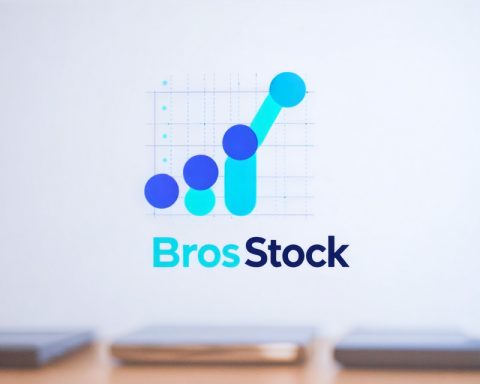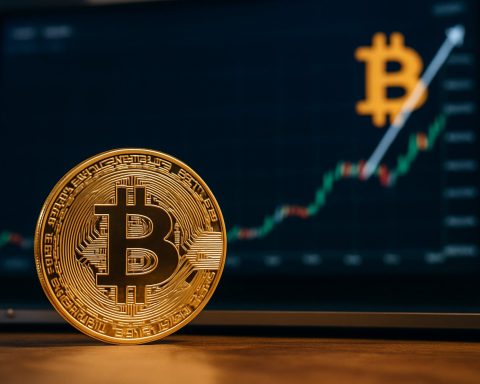- Traditional banks are seeking to introduce tokenized deposits as a response to the rise of stablecoins.
- This innovation aims to combine the safety of bank deposits with the speed of cryptocurrency.
- Tokenized deposits could redefine money management and enhance transaction efficiency.
- The evolution towards digital banking solutions may lead to lower fees and greater accessibility for consumers.
- As regulations evolve, tokenized deposits could revolutionize how consumers interact with their finances.
- Staying informed about this trend is crucial, as it may significantly impact the future of banking.
In a bold move to capture the digital currency landscape, traditional banks are seeking approval to introduce tokenized deposits. This innovative strategy aims to challenge the dominance of stablecoins, which have rapidly gained popularity among consumers looking for reliable digital assets.
Imagine having your savings transformed into digital tokens, seamlessly blending the safety of a bank with the speed of cryptocurrency. With regulators now working to provide clarity on this fresh development, a new era in banking may be on the horizon. The shift towards tokenized deposits could redefine how we view money, making financial transactions faster and more secure.
These deposits would allow customers to hold a digital form of their funds, making it easier to transfer money and conduct transactions in an increasingly digital world. Banks hope that by launching tokenized deposits, they can tap into the growing demand for versatile financial solutions, standing tall against the competition brought forth by stablecoins.
As the conversation surrounding cryptocurrency evolves, it becomes clear that banks are not just sitting back; they are ready to innovate. This shift could lead to lower fees, improved accessibility, and a surge in financial technology that directly benefits consumers.
The key takeaway? Keep an eye on the evolution of tokenized deposits—they could be the future of banking, offering a unique blend of traditional security and cutting-edge technology that fits perfectly into our digital lifestyles. As regulations continue to take shape, the competition is heating up, and consumers might just emerge as the ultimate winners.
Tokenized Deposits: The Future of Banking is Here!
Understanding Tokenized Deposits: What You Need to Know
In a groundbreaking shift within the banking industry, traditional banks are making strides to introduce tokenized deposits, an innovative approach designed to compete with the growing prevalence of stablecoins in the digital currency realm. As banks seek approval for this initiative, both consumers and financial experts are keenly observing the implications it may have on the future of financial transactions.
Tokenized deposits represent the digital transformation of savings, allowing customers to hold their money in digital tokens that are backed by the security of traditional banking. This concept not only enhances the speed of transactions but also provides a seamless experience in managing finances. Here’s a closer look at what tokenized deposits entail, including their features and potential market impact.
Features of Tokenized Deposits
1. Digital Tokenization: Your deposits are converted into digital tokens that can be easily transferred or used for transactions.
2. Enhanced Security: Leveraging the regulatory framework of traditional banks while embracing blockchain technology provides an extra layer of security.
3. Speed: Transactions conducted via tokenized deposits are executed almost instantaneously, enhancing customer experience and efficiency.
4. Cost Efficiency: The potential reduction in transaction and banking fees due to lower operational costs can benefit consumers.
Limitations of Tokenized Deposits
While the advantages are enticing, there are some limitations to consider:
– Regulatory Uncertainty: As banks navigate the legal landscape, the lack of comprehensive regulations may pose risks for both institutions and consumers.
– Technology Dependence: Tokenized deposits rely heavily on technology, which could be a drawback for users who are not tech-savvy.
– Market Trust: Consumers may have doubts about the reliability of new digital token systems compared to traditional banking systems.
Current Trends and Market Insights
The landscape of digital banking is rapidly evolving. According to recent forecasts, the use of tokenized deposits is expected to expand significantly over the next five years as more banks gain regulatory approval. This transformation could lead to an increase in financial inclusion, allowing smaller banks to offer competitive products that rival large institutions.
Important Questions Answered
1. How do tokenized deposits compare to stablecoins?
Tokenized deposits are backed by traditional banks, making them potentially more secure than stablecoins, which may face regulatory scrutiny and volatility. Unlike stablecoins, which often depend on fiat reserves, tokenized deposits provide the assurance of traditional bank backing.
2. What technologies enable tokenized deposits?
Tokenized deposits leverage blockchain technology to ensure transactions can be conducted securely and efficiently. This technology permits transparency and traceability, key aspects that many consumers seek in digital transactions.
3. What regulations are affecting the introduction of tokenized deposits?
Regulations are currently being formulated as authorities assess the implications of tokenized deposits on financial stability and consumer protection. Banks are pushing for a clear regulatory framework that will enable them to innovate while maintaining compliance with existing financial laws.
Conclusion
The rise of tokenized deposits signifies a pivotal moment for both consumers and the banking industry. As customers seek more efficient and secure financial solutions, traditional banks are poised to adapt and thrive in the era of digital currency. Keeping an eye on how this evolution unfolds will be critical for anyone involved in financial transactions.
For further information on banking innovations, visit Bankrate.











